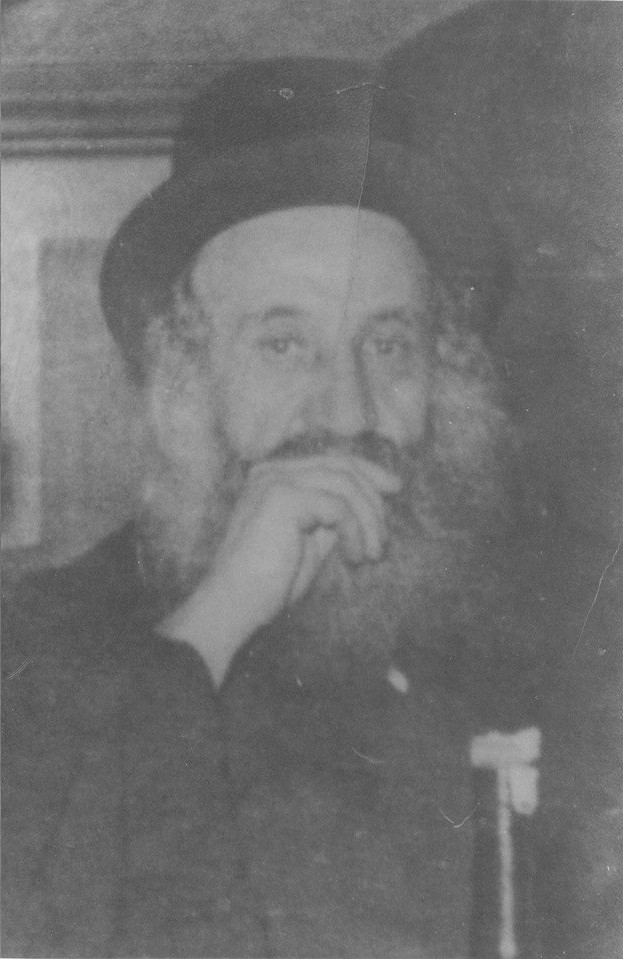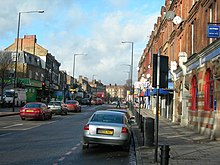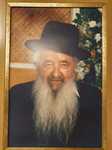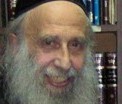| | NEWS
"You went after me in a desert, an unsown wasteland" (Isaiah)
The story of HaRav Moshe Yehuda Schneider, zt'l, rosh yeshivas Toras Emes in Memel, Frankfurt, and London<
by M. Samsonowitz

Part IV
For Part III of this series click here.
For Part V of this series click here.
Rav Schneider was truly among the main disseminators of Torah in our times. An unusual and dynamic individual who transplanted Torah and made it flourish in spiritual wastelands where no one believed it was possible, he did the painstaking groundwork that enabled the barren atmosphere in England and France to give way to the dozens of yeshivos, religious institutions and frum communities that are in existence today.
HaRav Schneider was a man whose entire focus was in the yeshivos which he established, and in his love for Torah, for which he lived. In keeping with his modest personality, his accomplishments for Torah were perhaps not fully appreciated in his lifetime. But the love for Torah and mussar which he instilled in his students produced mighty fruits which changed the face of postwar Jewry in Europe and Eretz Yisroel.
In the first three parts, we learned of HaRav Schneider's growth and early education, and how he achieved the seemingly impossible by founding a high-standard yeshiva in Memel, Germany, until the first World War threw life into a turmoil. Eventually, he moved to Frankfurt at the end of the First World War. There he was concerned for the spiritual preservation of the East European Jews who found themselves in Germany and he also did what he could for the native German Jews. He soon founded another yeshiva there, that again functioned at a very high level. But the end came.
In No-Man's-Land
The month of October, 1938 arrived, and the government expelled all Polish nationals, sending them to Poland. Rav Schneider, his family and several talmidim who were with him, were among those who were seized one Friday night and put onto trains to the Polish border.
Those apprehended were in a state of panic at their terrible misfortune, but Rav Schneider remained calm and self-possessed. On the very train that was taking him to an unknown fate, he was busy discussing where he should reopen his yeshiva: was Lodzh a better place, or perhaps Warsaw?
Shabbos afternoon the family was forced to leave the train and continue their journey by foot across no mans' land and the border. Their fellow travelers in misery quickly grabbed their packages and rushed to cross the border, hoping thereby to get the best accommodations possible. But Rav Schneider enjoined his family to carry their belongings not more than four amos (six to eight feet) at a stretch, so as not to transgress Shabbos de'Oraysoh.
The family slowly shuffled their way across the stretch. By the time they arrived at the borders, the deadline of the Polish authorities for entry had passed, and they were refused admittance.
It seemed that Rav Schneider's meticulousness in Shabbos observance had placed the family at a terrible disadvantage! The family was in the unenviable situation wherein the Polish refused to admit them, and the Germans would not take them back either. The Schneiders were left in no-mans' land, abandoned, without a clue as to what awaited them in what seemed a bleak, harrowing future.
Miraculously—but typically—Rav Schneider's dedication to mitzvah observance proved to be the source of his salvation. The frightful situation of being locked into no-mans' land spurred his friends and relatives abroad to extraordinary efforts to save him.
HaRav Gedaliah Schneider zt"l

His son Gedaliah, who had arrived in England the year before, quickly galvanized Dayan HaRav Yechezkel Abramsky, Chief Rabbi Rav Hertz, and the Chief Rabbi's son-in-law Rabbi Shonfeld. At their urgent request, the English Home Secretary agreed to issue an entrance visa to Rav Schneider.
While these feverish efforts were being made on his behalf, Rav Schneider was busy organizing the unfortunate Jewish families who had been left in the same homeless position as he. He was already in the midst of setting up a new yeshiva for them when the authorities informed him that he had received an English visa. He was allowed to return to Frankfurt to wind up his affairs.
Although he didn't want to leave without his talmidim, who had in the meantime scattered, he was told that once he was in England he could work more effectively toward bringing them over.
The infamous Kristallnacht arrived. On this dreaded night, Rav Schneider was in his Frankfurt home, surrounded by several of his talmidim. When word of the exploding pogrom reached their ears, his students urged Rav Schneider to push furniture against the flat's door to prevent the attackers' entry, but Rav Schneider declared: "This will not save us!" and refused to allow it.
Instead, they recited Tehillim with tears and broken hearts. The attackers, on the way up the stairs to his flat, were told by a non-Jewish neighbor that no Jews lived in that building. Thus they were saved.
Absolute Torah Study
There was no measure that Rav Schneider wouldn't use to convince a bochur or child to study Torah. He allowed one of his students to be a Pirchei leader just to influence one youth in his group to attend a Jewish school.
Another time, a widow wished to take her son out of yeshiva so he could help support the family. Rav Schneider offered her a monthly stipend to allow her son to remain in the yeshiva. This arrangement went on for a long time, until the mother herself realized the value of her son's Torah study, and the significant effect it was having on him.
Once a youth was in yeshiva full-time, Rav Schneider made sure that his time went only for Torah study. He would send off the boys in pairs when they walked from the beis hamedrash to the dining hall to encourage them to speak divrei Torah. He would ride ahead to the dining hall to observe if the boys arrived discussing Torah.
In the dining hall, if he observed that the discussions were on mundane topics, he would introduce a halachic question, and solicit the opinions of the bochurim. The ensuing lively discussion would easily go on for quarter of an hour. Other times he appointed a bochur every meal to teach a passage from the Shulchan Oruch with the Mishna Berurah.
Rav Schneider's love for Torah was boundless. He didn't think twice when Rav Weingarten, the Lezher Rav, once called him up in alarm. The Lezher Rav had a small Chassidic yeshiva in an outlying area of London, and his cook vanished one day. "What will I feed my bochurim?" he asked Rav Schneider in apprehension.
Rav Schneider quickly found a solution to this problem: he sent his daughter to the yeshiva to cook for the bochurim. It made no difference if it was his yeshiva or someone else's—the main thing was that it was for Torah!
Upper Clapton Road in London

Setting Up The Yeshiva In London
HaRav Schneider arrived in England after Purim 1939, on a Thursday night. His going to England was a fateful move which was eventually to have the influence of a tidal wave on the English Jewish community. He settled in a small flat on Upper Clapton Road, that later became the kitchen and dining room of the yeshiva that he at that time planned to set up.
HaRav Schneider immediately set about establishing his yeshiva. He started in the home of his son, HaRav Gedaliah, and soon Reb Sender Herman made available to him the beth midrash on Nightland Road.
Rav Schneider found a Jewish youth from Hamburg walking in the street. "Are you learning Torah somewhere?" he urged him. "Do you want to learn?"
Mesmerized by the fire in HaRav Schneider's eyes, the youth agreed to come learn. The next day, with one student, the yeshiva was in business again.
At the same time, Rav Schneider embarked on an intensive search to find his former students, wherever they were, and bring them to England. At this point he sensed the urgency of the situation, aware that he was saving them from both spiritual and physical destruction.
Within a few months he had located 30 of his former talmidim and extricated them from Germany and refugee centers in Poland. These bochurim were joined by Viennese bochurim who had fled from Czechoslovakia to London when it was annexed by Germany, and several German Jewish youths who had managed by themselves to escape the Continent.
Before long there was a vibrant yeshiva comprised of almost 100 bochurim from ages 15 to 22 studying in a dilapidated beis midrash in Stamford Hill. "Rav Schneider's Yeshiva" became the address for all the foreign bochurim who arrived in England.
*
Rabbi Fishel Goldberg zt"l

Rav Fishel Goldberg: "I grew up in Duesberg, near Cologne in western Germany. My parents were Polish citizens who had moved to Germany after World War I. My parents wanted me to come to yeshiva when I turned 14, so I was thinking of attending Breuer's yeshiva in Frankfurt.
"In that year Rav Schneider reopened his yeshiva in Frankfurt after it had temporarily been closed. An acquaintance of ours who was married to a Duesberg girl suggested to my father that I would be a good candidate for Rav Schneider's yeshiva. I nevertheless would have gone to Breuer's, but at the last moment they wouldn't accept me because I was under 15. So I went to Rav Schneider's yeshiva with 3 of my friends.
"In the very beginning there wasn't even a minyan of boys, but with time, more came until we were 25 boys. I learned there from 1934 until 1938. Then, in October of that year, the authorities suddenly expelled all Polish nationals. My family, and I with them, was dispatched to a Polish town right across the border. I began to consider attending a Polish yeshiva, but the Polish authorities wouldn't let us leave the town. In the meantime, Jewish refugee organizations came to the aid of the 10,000 stranded Jews in the same position as we, so we at least had food and shelter.
"In the spring, the refugee organization was sent a letter asking if any of Rav Schneider's students were under their care. They told me that Rav Schneider is looking for me. Somehow, he had managed to escape overseas, and he was trying to locate his students. After I replied to him, he sent me a visa to come join the yeshiva in England. I was penniless, so he sent me the fare. He even managed to send the sum in Polish currency.
"I arrived in London on Shavuos, and when I came, there were already 90 boys studying in the yeshiva, many of them new students from Austria. The yeshiva was running at full speed. Rav Schneider had to provide all these boys with food, clothing, and shelter. He was working day and night, like a man possessed.
"Rav Schneider saved my life. The rest of my family remained on the Continent, and eventually were sent to Auschwitz. Only one of my sisters remained alive after the war."
*
A talmid: "Those bochurim who had returned to the yeshiva in Frankfurt promptly, at the beginning of the zman, were sent with Rav Schneider to the border. They subsequently were returned with him to Frankfurt and provided with visas to travel to London. The latecomers were seized at their homes and expelled across the border. This is what happened to me.
"Rav Schneider worked tirelessly to locate us and bring us to London too, and we arrived just before the war broke out. In his first letter to me after my expulsion he rebuked me, `It's clear that it was a decree, but I must tell you that you have yourself to blame. Your friends who quickly returned to the yeshiva arrived in London over half a year ago, but because you delayed your return a few days, your way was much lengthened.' "
*
Rabbi Moshe Schloss zt"l

Rav Moshe Schloss: "I was among a group of German bochurim who came over to England on visas that Rav Schneider received for his talmidim. In our group were Fishel Goldberg, Naftoli Friedler, Ezriel Shechter, Sender Feuerstein and others. I was planning to make England just a short stop on my way to America, where I planned to reunite with my father and siblings as soon as I could find a way to travel there. The idea of sitting and learning in a yeshiva was the farthest thing from my mind. The very idea was foreign; and who could even think of doing such a thing during those frenzied times?
"I arrived in August, just a few days before the war broke out. Since there was no possibility of travelling to America, I decided to stay at the yeshiva until an opportunity became available to travel. But once I was there, Rav Schneider called me over often, and spoke to me urgently. `We have to oiftun! Look what is happening on the Continent! You must stay and learn, you must become a talmid chochom! It cannot be each man for himself; we have to become klal menschen!'
"He often told me, `From where will we have rabbonim to pasken a she'ela on a lefel?' It looked like there would be nothing left of the great yeshivos of Europe. Israel and America were so far away. One wasn't aware that vibrant Torah study existed there.
"We took his words to heart. If we were to have Torah for the future, we had to study it passionately right there in England. He inspired us all with the ideal that we had to save Torah study for the Jewish world. I fell under his spell and decided to commit myself to years of Torah study."
Running A Yeshiva During Wartime
The war broke out in its full fury. Soon virtually the entire Continent was under Nazi domination, and England was battling for its very survival.
The new circumstances provoked a new set of problems for Rav Schneider. Once again he clung to his devotion to erect a yeshiva and disseminate Torah in public, the only true cure to the "Jewish problem." If in Memel and Frankfurt the idea had been an absurdity, what could be said about setting up a yeshiva in London during the War?
Anyone able to leave London had fled to the countryside from fear of bombs. Thousands of refugees flooded the country, arriving without means of support. From where would Rav Schneider, a refugee himself, find the means to support a yeshiva of 100 bochurim?
Inside the yeshiva too, the student body had unique needs. Each bochur in the yeshiva had his own troublesome situation. Some, already refugees for half a year, were in despair at having lost family and familiar surroundings. Others were desperate to have their basic physical needs cared for. Still others couldn't fathom the purpose of Torah study and they found the intensive atmosphere of a yeshiva strange.
Rav Schneider had to penetrate into each student's heart and mind, and clear away the stumbling blocks that would leave him open to the invigorating potion of Torah. His love for his students and his fiery passion for Torah is what accomplished this. The fear of bombs, the worry for their parents on the Continent, the physical discomfort— all were brushed away by the love for Torah study with which Rav Schneider infused them and by his fatherly affection for them. They felt the summons he directed to them, "The great yeshivos of Poland and Lithuania were swept away. It is up to us to create a true yeshiva in England!"
He did not see the wartime crisis as an excuse to desist, but increased his efforts to establish his yeshiva even more. "This is not a time of which the gemora tells us: `One amongst them will go out to teach others.' Today every person who makes it to a yeshiva is already in the category of being that `one.' He must be shown the greatness of Torah so he will long for it."
Rav Schneider didn't only say it; he acted on his words. He spent many long hours with each student, encouraging each to remain in yeshiva and aspire for greater diligence in Torah study and yiras Shomayim.
Rav Schneider's son, Reb Gedaliah, who had learned in Kamenitz before the war, became one of the maggidei shiurim. When Rav Schneider's son-in-law, Rav Chaim Lazer Lopian, became a maggid shiur in 1940, the yeshiva included a group of boys who were learning on a level comparable to one of the great European yeshivos.
|




